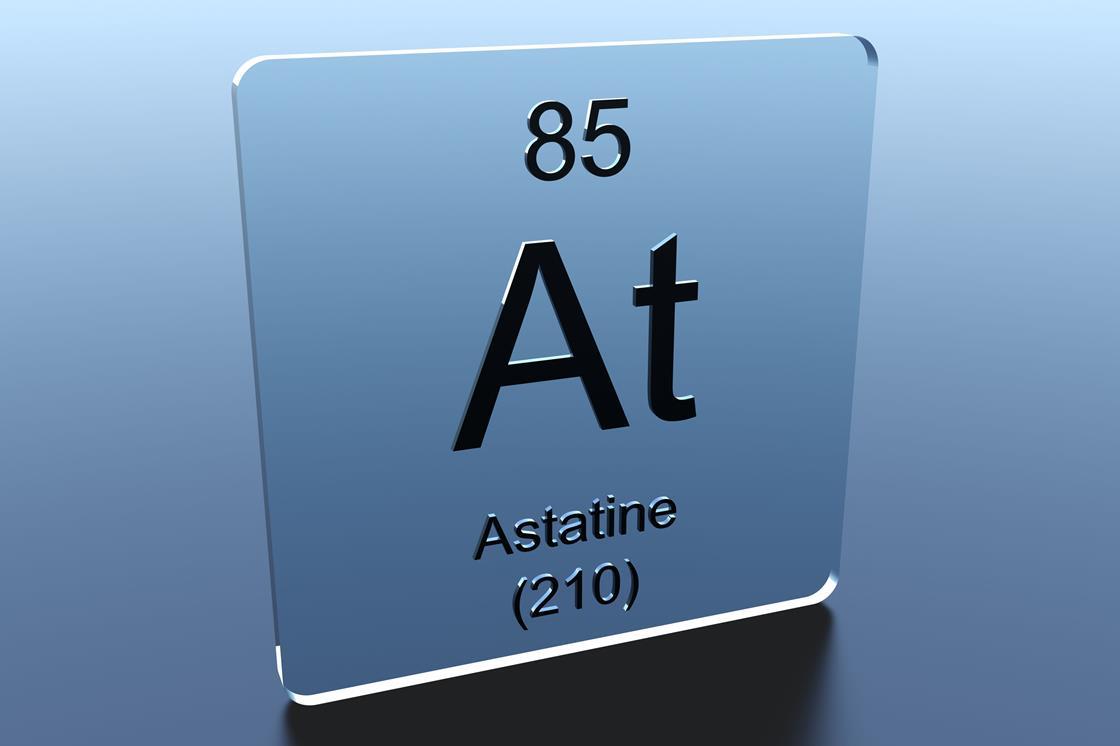

Currently this process uses beta particles, and while it has had a little affect it is not very practical. Astatine decays very quickly and during its decay process it produces alpha particles, two protons and two neutrons bound together, and these particles when directed precisely have to potential to kill cancer cells. Other possible uses of Astatine include using the alpha particles it emits to target single cancer cells. Since many of Astatine's properties are similar to those of iodine, which accumulates in the thyroid, Astatine would be injected into the human body and it would make its way to the thyroid where its radiation would kill the cancer cells. Astatine would probably work best to treat cancer cells in the thyroid gland, located at the base of the neck.

Cancer cells are killed off when exposed to radiation, and this process is called radiation therapy. However there is speculation of possibly using it as a possible cancer treatment. Since that little amounts of Astatine have been produced, due to its short half UsesĬurrently there are no widespread uses for Astatine, due to its high radioactivity. This test produced Astatine for the very first time in a laboratory. In the 1940's in the University of California, the isotope Bismuth-209 of the element bismuth was collided with Alpha Particles. The only natural occurring samples found to date, occur in trace amounts present in samples of Uranium and Thorium. When Thorium and Uranium decay, they will eventually decay into Astatine. It is thought that there are never more that 30 grams of it present at any given time in the world.

Astatine's half-life is incredibly short, around seven hours, the amounts present in the world are very low. This is a photo of a sample of Uranium, with a small amount of Astatine present.Īstatine occurs in very small amounts throughout the world. This happens because the radioactivity of Astatine is too great to allow any long lasting compounds. The acid will readily decompose back into its elemental forms when Astatine breaks down into Bismuth, or Polonium. This is the most powerful of all of the acids, but one of the least useful. When Astatine bonded with Hydrogen it produced an acid called Astatane. When Astatine bonds its resulting compounds will not last very long, due to Astatine's short half-life. However, difficulty in determining Astatine's properties is further compounded by impurities in the samples.
#Astatine symbol full#
Valence electrons determine how an atom will bond, because the ultimate purpose of atomic bonding is to achieve a full outer shell of electrons. Since both Astatine and Iodine are Halogens they would share some of the same properties, because they each have seven valence electrons. They found that the element behaves like Iodine, but has more metallic properties. Scientists at the Argonne National Laboratory performed detailed studies in the short time that the element existed in 1996. Since Astatine has an incredibly short half-life there are little details about its chemical properties. There is only a few elements that Astatine will bond with, and of these resulting compounds none of them will last very long, before the Astatine decays away. Of the halogens Astatine is the least reactive, and it behaves much closer to a metal than the other halogens. However, there are theories about using Astatine to fight cancer. This fact makes it almost impossible to find any common, and efficient uses for Astatine. The element received the name because the longest half-life of its longest isotope is just barely over seven hours. When Astatine was discovered the scientists named it Astatine which came from the Greek word astatos, meaning unstable. The element is the rarest natural occurring of all of the 118 known elements. All properties are for STP unless otherwise stated.Īstatine is the last know Halogen with an atomic number of 85.


 0 kommentar(er)
0 kommentar(er)
